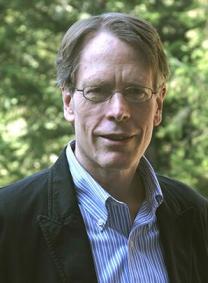How embracing uncertainty can help policymakers during a pandemic

This story was originally published by UChicago News. Read the article on their site here.
To make better policy in a crisis, a Nobel laureate argues for decision theory
Since the onset of the COVID-19 pandemic, policymakers have been forced to make decisions in the face of uncertainty. But key policy questions—like how best to reduce viral transmission while avoiding bad economic consequences of lockdowns—rarely come with definitive answers. Instead, quantitative models present a range of outcomes that could occur under different subjective inputs into the model constructions.
As a result, policymakers might make consequential decisions based only on the model with the predictions that they like best, or the advice of just one expert who has their ear. But Prof. Lars Peter Hansen, a Nobel laureate and economist at the University of Chicago, thinks there is a better way to confront uncertainty in policymaking: with decision theory.
In a new perspective paper in the Proceedings of the National Academy of Sciences, Hansen and his co-authors argue that policymakers should accept that they cannot know which, if any, model predictions are “correct” in the midst of a crisis like a pandemic. By embracing uncertainty, they can make policies that are more transparent, responsible and better at taking into account a variety of possible future circumstances.
“Often, when economists want to influence policy, they feel the need to assert themselves with great confidence,” Hansen said. “But there’s a more thoughtful and engaging way for experts to work with policymakers, without overstating their expertise: You don’t have to know everything to do something about a problem.”
If experts are willing to acknowledge the limits of their own models and data-based predictions, Hansen added, they can help shape policymaking discussions to be “more reliable, more potent and truer to the scientific knowledge base,” both in the current pandemic and for policy challenges in the future.
When policies are being created to address problems like the COVID-19 pandemic—for which the knowledge base remains incomplete—one of the keys is exploring the implications of more than just one model, according to Hansen, the David Rockefeller Distinguished Service Professor in Economics, Statistics and the Booth School of Business.
This is especially important when multiple disciplines come into play as alternative models which have different strengths and weaknesses: By arming themselves with insights from decision theory under uncertainty, policy support teams can better evaluate where models agree and disagree and understand the range of outcomes that could result from a decision. (In addition to other economists, Hansen co-authored the new paper with public health scholars and epidemiologists.)
One of the reasons interdisciplinarity is important is because every policy decision is made according to multiple kinds of information: For example, when it comes to reopening schools, those in power must factor in both the transmission probabilities between children as well as the possible limitations and consequences of remote learning. In the case of vaccine distribution, policymakers need to weigh the pros and cons of vaccinating different groups sooner, especially when it comes to essential workers who face different risks and have different roles in the economy.
There’s also a big difference, Hansen said, between the types of predictions that quantitative models can provide.
“Decision theory can be thought of as a language to help discipline conversations between policymaking support teams and scientific experts.”
“Economists like to think about tradeoffs,” Hansen said. “How should the model’s best guess be weighed against the possibility of potentially bad outcomes? Some policies may be better at addressing bad outcomes, for example, but perform worse under best guesses. Decision theory doesn’t tell you how to make that tradeoff, but it helps you characterize what the tradeoff is so you can weigh the options in an informed way and justify your decision.”
By better understanding these tradeoffs through dialogue with experts, policymakers can make decisions that balance safety and risk according to their priorities, as well as those of the public. Complex policymaking processes, Hansen acknowledged, may struggle with the full formality of decision theory—but, he added, even an informal use of this theory can still yield useful insights.
“Decision theory can be thought of as a language to help discipline conversations between policymaking support teams and scientific experts,” Hansen said.
By recognizing uncertainty and conveying not only the policy decision but the rationale and associated uncertainties behind it to the public, policymakers and experts can increase transparency and accountability. They can also help add nuance to the public’s understanding of any given issue, adjusting expectations and building confidence that a leader is acting in good faith.
That further underscores the value of a decision theory framework—not only for COVID-19 policies like public health policy and vaccination efforts, but also for issues like climate change risk mitigation, which is the subject of Hansen’s ongoing research.
Citation: "Rational policymaking during a pandemic," Berger et al. Proceedings of the National Academy of Sciences, Jan. 26, 2021. DOI: https://doi.org/10.1073/pnas.2012704118.
 THE UNIVERSITY OF CHICAGO
THE UNIVERSITY OF CHICAGO


